Dr. Rasa Varsackytė
Evolution of Kaunas Self-Government Institutions
The date of Kaunas' origin as a city should be quoted not as the year 1361, when the name of Kaunas castle was first mentioned in Teutonic Knights' chronicles, but February, 1408, when Grand Duke Vytautas granted Magdeburg rights to the city on the Nemunas river. After 1408, Kaunas citizens were given a wide legal and taxation autonomy. Contemporaries called that community Respublica Caunensis – the Kaunas Republic. Having received and implemented the privilege, Kaunas became a true European city. The power of self-governing Kaunas was shared by three interrelated major institutions: vaitas (the Mayor), the Council or Magistrate (12 lay judges and 4 burgomasters) and the Benchers' Court (12 persons).
According to Magdeburg Law, Vaitas was the top officer of the city self-government, the official representative of the city; however, this office meant more honour than power. Vaitaspresided over the Benchers‘ Court and announced its decisions. The city also had the Vaitas Domestic Court, but the 1540 Kaunas privilege limited its jurisdiction limits; since then Vaitaswas only allowed to hear cases with claims below a certain sum of money (10 kapų grašių).According to the 1584 privilege granted to Kaunas by Steponas Batoras, the Magistrate members had the right to select four candidates for the post of Vaitas, and the Grand Duke would choose the Head of the city from among them. In this way, Kaunas self-government was enhanced, the power of the Magistrate was strengthened, and the Vaitas office was entrusted to an experienced citizen familiar with the city's affairs. Next to Vaitas, the second major institution of the city self-government was the Council or the Magistrate. For a long time, it was controling the whole of city life since it adopted regulations (vilkierai) and supervised their implementation, constituted one of the city courts for hearing citizens' civil cases, custody, property, or inheritance issues, etc. The lowest in rank among the city authorities was the Benchers' Board, whose duty was to solve citizens' criminal cases, property litigations, or city order violations. After the mid-17th century wars, city occupation and the following crisis, the Benchers' Board became part of the Magistrate, and the administrative issues of the city were considered together with the Council. At the same time, a new joint Vaitas-Magistrate Court was formed for investigating criminal cases of municipality representatives. The meetings of the municipal government used to be observed by the so-called community jury (although having no vote), from whom new members for the Magistrate would be selected.
Annual elections of the municipal government took place on February 22 (Day of the Chair of St. Peter). Following an old tradition, election procedures would start with the Holy Mass held by the Kaunas Bishop in the parochial St. Peter and Paul Church (present Archcathedral Basilica), at the co-called Literary Altar (the Altar of the Assumption of blessed Virgin Mary), asking God for help in electing new officers, for blessing their work, and protecting the city community. After the mass, the procession of Magistrate members, community jurists, merchants observing the meetings, and heads of workshops would move to the City Hall. Here, elections would start with the psalm „Veni Creator Spiritus” (Come, Creator Spirit) and the prayer to the Lord. After the election session, the participants would come back to church to thank the Lord for the day and to sing „Te Deum Laudamus“ (We praise thee, O God).
The status of self-government was an important part of the citizens' identity. In the state of nobility, the city was mostly the space for the citizens' self-expression, potential for business, career, or creation. The city eagerly watched its privileges, symbolic of which were the City Hall, the construction of which started in 1542, and the coat of arms (seals), essential symbols of the citizens' self-esteem. In early 1572, the city‘s scribe, Andrius Nareiko (Nareyko), poetically described the value of the City Hall in the Kaunas Magistrate book. He compared it with the house of God and stressed the significance and responsibility of the officials working there:
This building can be called the house of God
If virtue flourishes here.
It is the home of the Jury and the Council,
Not that of traitors and betrayal.
Those who wish to live here
Ought to know how to govern.
(Scribe A.Nareiko‘s entry in 1572 (no month or day), Manuscript Dept of Vilnius University Library, f. 7, K. m. a. 1568–1572, l. 115)
By the way, an unknown person describing elections to the Kaunas Magistrate in late 18th century was quite sarcastic about the city authorities of that term:
We've got masters,
We've got order,
We know the real work time,
But there is no end to the lordliness:
No matter how much you give, work or pay,
It's always too little.
(Giesmė mužikėlio: iš XVI–XIX a. anoniminės lietuvių poezijos, Vilnius, 1982, p. 27)Such irony of the contemporary author might have been caused by the late-18th century struggle of political groups in the Magistrate, accompanied by personal interests, defiance, and financial manipulation of the officials.
It should be stressed that the orders of the city's self-government institutions functioned only within the city, while beyond its borders the laws of the nobility-ruled state were valid. The situation underwent changes during the period of the so-called Four-Year Seimas (1788–1792). On April 18, 1791, the Seimas issued the City Law, which was incorporated in the Constitution of May 3, 1791. All the citizens, nobility included, had to obey the City Law. Noblemen possessing houses in town could become citizens, and would not lose their nobility privileges, as would have been the case before. Citizens were granted some nobility rights: immunity before the trial, the right to purchase land outside the city, etc. This brought the nobility and citizens closer. Unfortunately, the reforms were not implemented as the Polish-Lithuanian state finally collapsed in 1795.
During the transitional period in the late 18th – early 19th century, self-government of cities was not yet restricted; besides, the old privileges and Magdeburg Law were still valid. However, compared to the period of the Grand Duchy of Lithuania, the Magistrate's competencies were strongly limited, the city was under direct control of Vilnius and Peterburg authorities (and since 1843 – the Council of Kaunas province, gubernija). In 1808 the City Magistrate was replaced by a Tsarist-type council, Dūma, consisting of 6 persons who elected the Head of the City among themselves. The Dūma did not possess great power: it controlled order in the city, and supervised business and property matters. That situation lasted until 1876, when the City Law came into force on June 28, 1870. According to this law, the main self-government institutions were electoral meetings, the City Dūma, and the City Council. The function of the electoral meeting was to elect members of the Dūma every four years. The City Dūma (self-government body) was then elected by property owners, not by the representatives of citizens and nobility. The City Dūma performed organisational functions. Its 69 to 72 members were elected for four years. Its composition was strictly regulated with regard to confession (non-Christian members, i.e., Jews, could not exceed one third of the Dūma). The City Council was an executive body, consisting of the Head of the city and the Council members, who were elected every four years from the same Dūma members. The number of the Council members was reduced from six in 1876 to four in later years. The main institution supervising municipal self-government was the Province (Gubernijos) Committee of Municipal Affairs. It was responsible for the main issues: approving election results, resolving conflicts, investigating complaints, considering municipal budget estimates. Thus, city self-government was considerably limited in tsarist Russia. Towards the end of the century, municipal competencies were even more constricted.
During the period of the First Republic of Lithuania, Kaunas' City Council was elected six times: in 1918, 1920, 1921, 1924, 1931 and 1934. The number of the Council members varied: in 1918, the Council consisted of 71 members, in 1920 and 1921 – 55, 1924 – 70, 1931 and 1934 – 24 members. In 1918–1919, the functions of burmistras (city President/Mayor) were performed by a presidium of four members. The post of burmistras was introduced in 1921. The first burmistras of Kaunas was Jonas Vileišis (until 1931). His work was continued by successors: Antanas Gravrogkas (1932–1933) and Antanas Merkys (1933–1939). The City Council would elect a Board from its members (since 1931 its functions were taken over by burmistras), and its size depended on the number of the City Council members. Different political parties, organisations and societies would take an active part in the municipal elections. Before the election, the city would host numerous party meetings, noisy rallies, and colourful pre-election posters were pasted everywhere. Actually, after the coup d‘etat of February 17, 1926, the municipal government of Kaunas, as well as those of other cities, did not play any major role. The new 1931 Law of Self-Government imposed stricter control by the Ministry of Interior Affairs on municipalities. Due to the revised property qualifications (the suffrage was left only for owners of farms and enterprises, as well as employees of state institutions and miunicipalities) and the changed age limit (above the age of 24), not many people could participate in the elections. In 1924, 46,000 Kaunas citizens had the right to vote in the municipal elections, while in 1927 only 27,000 had that right. The chief opposition parties and all the democratic movement groups criticised the Law of 1931 and adopted a decision to boycott the Municipality election. However, things did not change much, and opposition parties took part in the election of 1934. Although the municipality was elected in 1934 for the term of three years, the Government did not risk to hold a new election because of strong opposition; instead, they extended the mandate of the existing municipalities.
In the years of the first Republic of Lithuania, Kaunas' population consisted of different nationalities: according to 1923 Census, 59% of Kaunas‘ population were Lithuanians, 27% – Jews, 4.5% – Poles, 3.5% – Germans, 3.2% – Russians. During democratic elections, Lithuanians could not get the majority in the City Council. Lithuanians were not as energetic in municipal elections as the well-organized Jews, Poles, Russians or Germans, and did not manage to overcome the national minorities which had strong communities and disciplined electorates. Only after the National Party tautininkai changed the Law of Municipalities, Lithuanians won the elections in 1931 and 1934. This law stated that the members of the councils had to know the Lithuanian language, both oral and written. Besides, since Kaunas was the capital, one third of its Council (i.e., 12 members) had to be appointed by the Government.
The Municipality of Kaunas had to work hard during the first Republic to help the impoverished post-war city become the political, cultural, and economic centre of the country. A lot of effort and investments were required for introducing a wastewater system, city electrification, building roads, opening new schools, and hundreds of other tasks.
When the Soviet Union occupied Lithuania on June 15, 1940, municipalities were dissolved, their employees dismissed or deported. As early as June 8, the majority of city mayors, heads of rural districts, as well as all the heads of counties, were dismissed. They were replaced by persons loyal to the new system. The final touch in destroying the former self-government system was a resolution adopted by the so-called people's government on July 16, 1940, concerning the dismissal of municipality councils in all counties and districts. The Municipality Department at the Ministry of Interior Affairs authorised city mayors, county councils, and heads of rural districts to manage urgent problems. Actually, since then municipalities stopped functioning, only their heads remained (apskričių viršininkai, miestų burmistrai, valsčių viršaičiai). Besides, the functions of these officers were also narrowed and their roles reduced. The real power was in the hands of city, district, or county Communist party functionaries and repression bodies. The subordination of local self-government was changed the same year in August. The Municipality Department was shifted from the Ministry of Interior Affairs to the People‘s Commissariat of Municipal Economy. Thus, the Communist Party entrusted the municipalities only with economic functions and reduced them to the status of Executive Committees that existed in the Soviet Union. On November 12, 1940, the Central Committee of the Lithuanian Communist Party approved the decree of the Supreme Soviet of the Lithuanian SSR on forming executive committees. The previous Law of Local Municipalities from 1931 was annulled. After the war, Soviets established councils of working people‘s deputies. The first elections staged by Soviets took place on January 18, 1948. The councils did not have any real power because all major decisions had to meet requirements of the local communist party or higher institutions. The mission of the councils was to implement the policy of the Communist party locally, to manage (control) cultural and political activities and to ensure obedience to laws.
The first free and democtratic elections to municipalities after 1924 took place on March 24, 1990. Following the Law of Local Sef-government adopted on February 1, 1990, municipalities were divided into lower rank (rural districts, settlements (districts), and region or county towns), and those of higher rank: regions, counties, and cities. Kaunas was granted the higher-rank municipality status. The institution representing Kaunas municipality, elected in March, 1990, was initially called the Council of People‘s Deputies of Kaunas City, and consisted of 100 deputies. In April 1990, it was renamed the Kaunas City Council, and in July 1994, the Municipality Council of Kaunas City. The first Mayor of Kaunas, Vidmantas Adomonis, took office on May 15, 1990. The Law of Local Municipalities of the Republic came into force on July 7, 1994, and has been valid since.
1. Astramskas A., Kauno gubernijos miestų savivalda 1876–1915 metais: daktaro disertacija, Vilnius, 2018.
2. Astramskas A., Savivaldos ir vietinės caro valdžios konfliktai bei pilietinės visuomenės apraiškos Kauno miesto dūmoje XIX a. pabaigoje – XX a. pradžioje, Lietuvos istorijos metraštis, 2016, nr. 2, Vilnius, 2017, p. 117–140.
3. Civinskas R., Glemža L., Kauno magistrato politinės kultūros bruožai XVIII–XIX a. sandūroje, Kauno istorijos metraštis, t. 3, Kaunas, 2002, p. 67–80.
4. Civinskas R., Glemža L., Kauno miestiečių elito kaita 1764–1831 metais, Kaunas, 2019.
5. Kaunas: istorija, praeitis, dabartis, Šviesa, 2006.
6. Kiaupa Z., Kauno istorija: Kauno istorija nuo seniausių laikų iki 1655 metų, t. 1, Vilnius, 2010.
7. Kiaupa Z., Kauno miesto savivalda, Darbai ir dienos, Kaunas, 1997, t. 4 (13), p. 19–28.
8. Kiaupa Z., Lietuvos miestų savivalda XIV–XVIII a., Lietuvos heraldika, sudarytojas ir parengėjas E. Rimša, Vilnius, 1998, [t.] 1, p. 163–185.
9. Kiaupa Z., Vaito rinkimas Kauno magistrate (XVI–XVIII a.), Lietuvos istorijos metraštis, 1974 metai, Vilnius, 1976, p. 13–18.
10. Lietuvos savivaldybių portalas www.savivaldybes.lt
11. Mikalauskas A., Personalo organizavimas Kauno miesto savivaldybėje 1918–1940 m., Kauno istorijos metraštis, t. 6, Kaunas, 2005, p. 149–164.
12. Morkūnaitė A., Rinkimų kampanijos į Kauno miesto savivaldybę (1918–1934), Kauno istorijos metraštis, t. 2, Kaunas, 2000, p. 112–120.
13. Morkūnaitė-Lazauskienė A., Kauno savivaldybės ir centrinės valdžios santykiai (1918–1931), Kauno istorijos metraštis, t. 10, Kaunas, 2009, p. 35–48.
14. Morkūnaitė-Lazauskienė A., Pirmieji Kauno Miesto tarybos rinkimai (1918 m.), Kauno istorijos metraštis, t. 3, Kaunas, 2002, p. 105–117.
15. Stačiokas R., Rimas J., Lietuvos savivaldybių raida ir veiklos finansavimas, Kaunas, 2002.
16. Statkutė K., Kauno miesto savivaldos formavimasis 1876–1893 m., Kauno istorijos metraštis, t. 5, Kaunas, 2004, p. 149–203. (straipsnis parengtas magistro darbo pagrindu)
17. Varsackytė R., Kauno miesto valdžios žmonės XVII–XVIII a., Kauno istorijos metraštis, t. 5, Kaunas, 2004, p. 7–81. (straipsnis parengtas magistro darbo pagrindu)
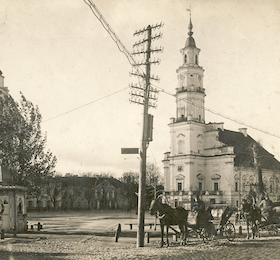
Take a look at the brief history of Kaunas, with a wealth of the important facts and statistics.
ReadIf you find any inaccuracies or if you would like to submit additions, please send us your comments by filling out this form:
-
 Kaunas County Public Library
Kaunas County Public Library
-
 Žymūs Kauno žmonės: atminimo įamžinimas
Žymūs Kauno žmonės: atminimo įamžinimas
-
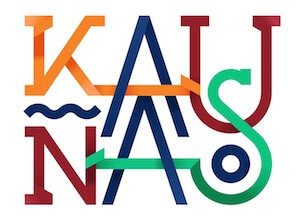 Kaunas IN
Kaunas IN
-
 European Heritage Label
European Heritage Label
-
 ModernistKaunas
ModernistKaunas
-
 Kaunas 2022
Kaunas 2022
-
 Kaunas Full of Culture
Kaunas Full of Culture
-
 Open Archives of Kaunas
Open Archives of Kaunas
-
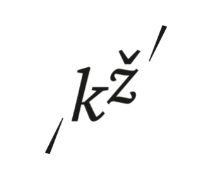 Kauno žodynas
Kauno žodynas
-
 eLibrary
eLibrary
-
 Virtual Culture Heritage System
Virtual Culture Heritage System
-
 Europeana
Europeana
-
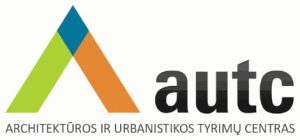 Architecture and Urbanism Research Centre (AUTC)
Architecture and Urbanism Research Centre (AUTC)
-
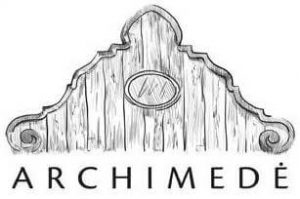 ARCHIMEDĖ
ARCHIMEDĖ
